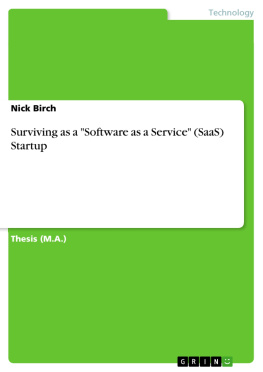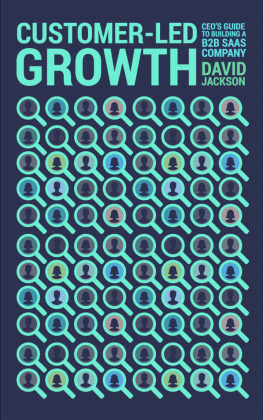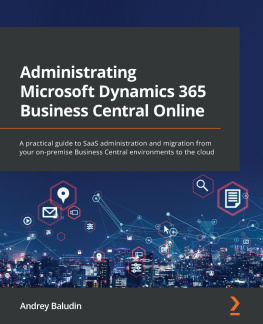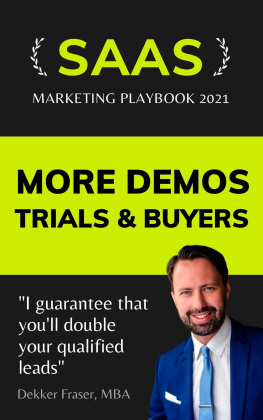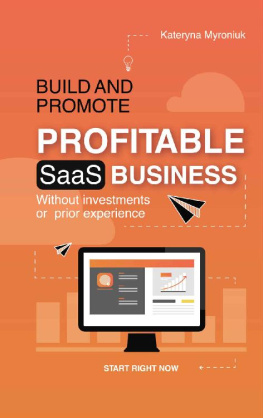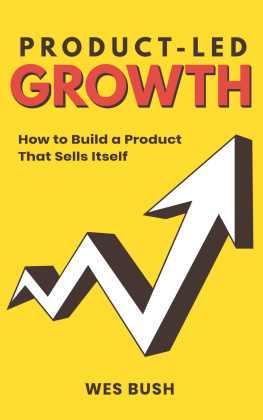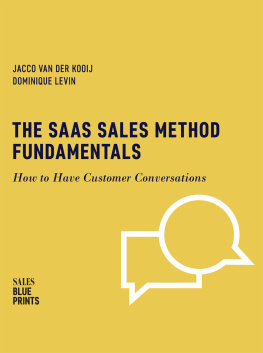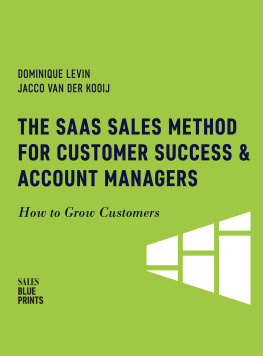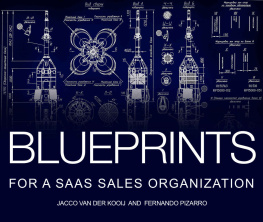Allrights reserved.
Printedin the United States of America. No part of this book may be used or reproducedin any manner whatsoever without written permission except in the case of briefquotations embodied in critical articles or reviews.
Alltrademarks are the property of their respective companies.
The webaddresses referenced in this book were live and accurate at the time ofpublication but may be subject to change.
Used withpermission from Alfred Music, Inc.
Inkeeping with the philosophy of the Pledge 1% movement, one percent of allproceeds of this book will be donated to a charity.
In 2003, I left a successful career in consulting tojoin a four-year old software company, building a recruiting and Human CapitalManagement (HCM) solution and delivering it over the Internet. Our company wasabout the same age as an upstart tech company in San Francisco calledSalesforce who was calling for the end of software.
At that time, my company was aggressively signing newclients (acquiring logos as it were) to gain relevant market share. I wasrunning IT operations and was faced with several challenges as the businessgrew 100% every year.
The first challenge was scalability. We hosted oursolution in an off-site colocation facility and had to plan all expansions toour hardware. Install too little hardware and you miss a sale. Install too muchand you have the CFO heading down to your office. In addition to technicalscalability (our databases were doubling in size every 160 days), we also hadto find a way to scale operationally. If we doubled the number of clients, wecould not expect to double the number of operations staff. Process optimizationand automation were imperative.
The second challenge was retaining our existing clients.Most clients signed a three-year contract and many of our larger clients werecoming up for renewal just as I was coming onboard. Even though managementsfocus was sell, sell, sell; our renewing clients were demanding service,service, service. After three years, our clients had become much moreknowledgeable about SaaS, what demands to make of their SaaS provider and whatlanguage they expected in their contracts.
So, my team had to rapidly come up with credibleanswers to questions on network security, data segregation, disaster recovery,uptime guarantees, maintenance windows, etc.
There were many other challenges about data sovereigntyand the choice of data center locations, contracts with hardware suppliers,follow-the-sun support models, zero downtime software maintenance, etc. Thelist goes on and on.
After leaving this SaaS provider around the time oftheir IPO, I went on to help other companies on the same journey. I haveencountered SaaS providers that were basically running their business on Excelspreadsheets and were about to implode. Others were transitioning from an on-premiselicensing model to SaaS, where I heard Support staff asking their SaaS clientsto send in a dump so that they could reproduce the problem. Others hadcustomized their software extensively for each client such that they wererunning over two dozen code versions in production with no hope to achieve anysignificant scalability or automation.
In my mind, the basic tenants of a successful SaaScompany were clear. Yet, I realized that what I considered obvious was notalways what was being implemented in the real world. The elements of success ofa SaaS company had not been compiled in a single work. There were someexcellent blogs that discuss particular elements of the equation, but nothingtied it all together. That is why I wrote this book.
This book is a must read for entrepreneurs who are launchinga SaaS company. It will also guide any software company who is transitioningfrom an on-premise license model to SaaS. It also provides useful informationand insight to different functional managers within a SaaS company. My hope isthat users of SaaS software will also find the contents interesting as theybecome more knowledgeable clients of their SaaS providers.
The contents of this book cover the definition and theorigins of SaaS. It then goes on to describe the functional, operational,technical and financial aspects of SaaS. The final chapters discuss security,sales and contracting.
I wrote this book to fill a void, as it exists today,in the world of SaaS. Yet, software paradigms continue to evolve as we move tomicro-services and an API-driven software economy. So, the definitions andpremises of this book may evolve to something new in the future. I am glad tohave taken one step of that journey with you, through this book.
First and foremost, I wish to thank my wife, Elaine,for putting up my late nights and weekends staring into a computer screen. Writingthis book has consumed many hours that were only possible to do with her fullsupport and encouragement.
A special thanks to Martin, my boss at Taleo, myassociate at SaaS360 and ski companion for the last twenty-five years. Thanksfor introducing me to the world of SaaS. Thanks for the many discussions,comments and criticisms as the content of this book took shape.
Thanks to Kai Wang, who gave Martin and I fullconfidence in reshaping his SaaS organization. His support allowed us toexperiment and perfect many of the concepts presented here.
Kudos as well to my SaaS Operations Team at Taleo:Martin T., Andr L., Bruno S., and the B brothers: Phil & Pat. You showedme the true meaning of dedication, innovation and team-work. It was a greatride together.
As a continual learner, I would like to thank the many teachers,mentors and coaches that I have had the pleasure of meeting over the years. Youhave, probably unknowingly, contributed significantly to what I have becometoday. I will try to pass it forward as best I can.
Dedicated to brain tumor survivorseverywhere
I've looked at clouds fromboth sides now
From up and down and still somehow
It's cloud's illusions I recall
I really don't know clouds at all
- Joni Mitchell
loud computing is widely used, but oftenmisunderstood term. When people hear that their data is in the cloud, theyoften imagine an amorphous, almost magical, computing and storage environment. Othersassociate cloudcomputing with a specific service offering such as Amazon WebServices (AWS), Google Cloud Platform, IBM Softlayer and Microsoft Azure.
In this Introduction, we will define cloudcomputing and explain its three main variants: Infrastructure as a Service(IaaS), Platform as a Service (PaaS) and Software as a Service (SaaS). We willalso explain the differences between a public cloud, private cloud and hybridcloud. In short, we will learn what Paul Maitz, CEO of VMWare, meant when hesaid: Cloud is about how you do computing, not where you do computing.
In fact, the cloud is not amorphous but a realand physical, but ever-changing, collection of servers and storage units,located in data centers and tied together through fiber optic networks routingthrough peering points that are accessible through your Internet ServiceProvider at your home or office, or accessible through your cellular networkprovider and your smart phone.


